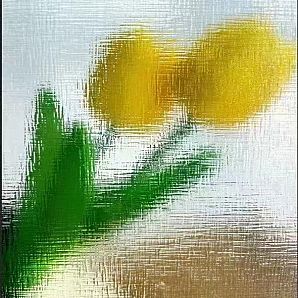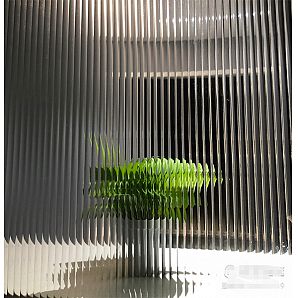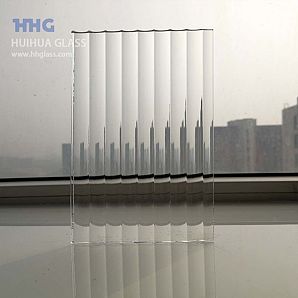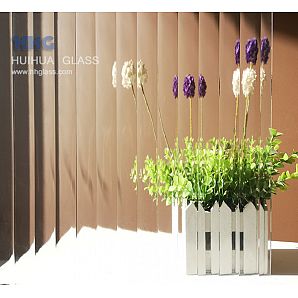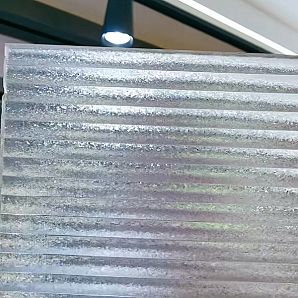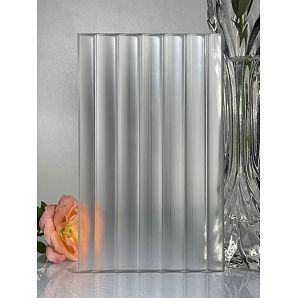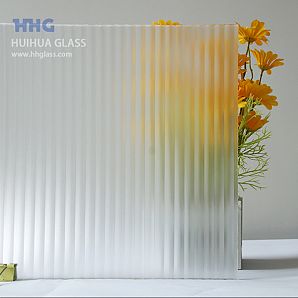Solar Photovoltaic Glass Reviews: Working Principle and Prospects
Glass plays an important role in various fields of our lives. It has rich functions, whether it is used for residential or architectural design, or for industrial, military, national defense research, energy production, ecological environment, modern communication technology, other materials cannot be as widely used as glass. With the application of photovoltaic power generation, solar photovoltaic glass is becoming increasingly popular in the market.
1、 The working principle of solar photovoltaic glass
Solar photovoltaic glass is a novel high-tech building glass product that seals solar cells through film between a piece of low iron glass and a piece of back glass. Cover the solar cells with low iron glass to ensure more light transmittance and generate more electricity. The tempered low iron glass has higher strength and can withstand greater wind pressure and significant changes in temperature between day and night.
Widely used in building curtain walls, photovoltaic roofs
Widely used in various fields such as building curtain walls, photovoltaic roofs, shading, solar power generation systems, etc.
The installation can be carried out using exposed frame, concealed frame, or various profiles in conjunction with curtain walls.
The current battery technologies used for commercial production of solar modules are mainly crystalline silicon technology and thin film technology.
According to the different application objects, photovoltaic glass can be divided into two types: first, packaging cover glass for crystalline silicon batteries: AR coated glass, and ultra white calendered glass. Ultra white float glass; The second is transparent conductive film glass (TCO) used for thin film solar cells, which mainly includes coating with AZO.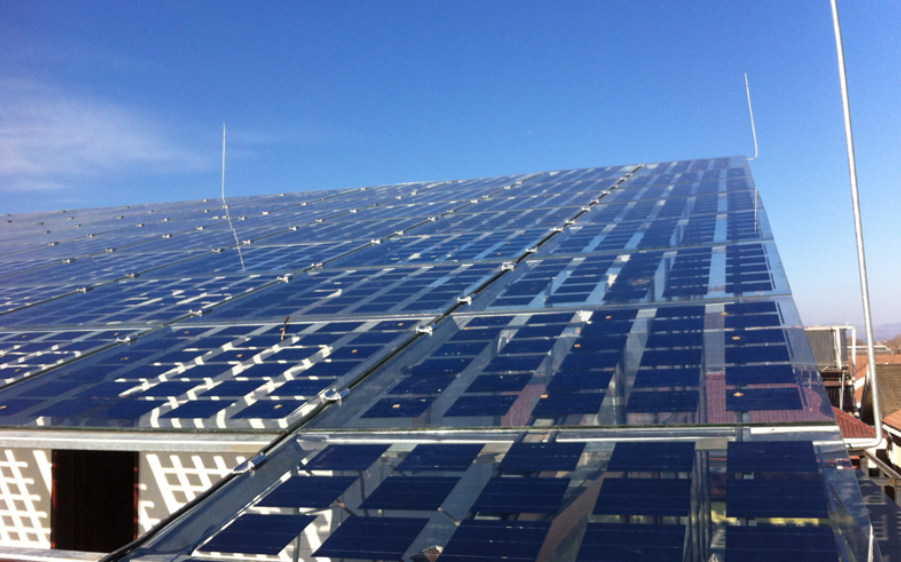
2、 The working principle of photoelectric curtain walls
The design of photoelectric curtain walls needs to consider various factors such as batteries, templates, wires, and transformers. Each battery forms a template, each template forms a small grid, and is connected through wires. All wires then form a PV transformer. A PV transformer is a closed curtain wall section, and each set of optoelectronic equipment can be composed of one or more transformers. Each optoelectronic device first generates direct current, which is then converted into alternating current and transmitted through a voltage network. The reverse rectifier then converts the 230/400 volt voltage into electrical energy with a frequency typically of 50 hertz.
Crystal batteries are interconnected through wires and connected to large surface templates. These batteries are embedded in hard resin glass, and the wires can be connected to the back of the template or the edge of the glass. As a component of the template, amorphous solid is a complete plane, interconnected, embedded in two pieces of glass and transparent resin. All templates can be used as building materials for curtain walls. These templates are relatively sturdy, have good electrical insulation, and meet secondary safety standards. After taking these measures, even if an error occurs, dangerous voltage will not appear in the touchable area. Optoelectronic templates have the ability to resist external environmental interference. They can still be used for decades in ozone, acid rain, or environments below -50 to 90 ℃, and are relatively beautiful modeling materials.
3、 Solar Window Market
Solar glass technology is still constantly developing. Currently, developers are still striving to make solar windows cost-effective - both for manufacturers and consumers. Startups, including NEXT Energy Technologies and SolarGap, typically rely on government research and development support to push their products to the market. The first demonstration project of NEXT Energy Technologies in Fremont, California was announced in April 2022, receiving $3 million in funding from the California Energy Commission, while SolarGaps received funding from the European Union. Just like every new technology, not every product can succeed. Physeee, a Dutch sustainable building technology developer, installed PowerWindows as a pilot project at a Dutch bank in 2017. However, each window can only generate enough electricity to charge multiple smartphones simultaneously. While developing and marketing other innovative technologies, Physeehas not yet brought PowerWindows to market.
4、 The Future of Solar Windows
The manufacturing of window glass is a multi billion dollar industry, and the construction of new buildings provides tempting opportunities for solar glass developers. According to the US Census, approximately 1.8 million new homes are under construction each year in the United States alone. Since January 2020, all new homes in California have had to use solar photovoltaic power generation - a potential market with over 100000 new homes per year.
Making the renovation efficient and economical may be more important. According to IPCC data, buildings account for approximately 16% of greenhouse gas emissions, mainly from heating and cooling. A study in 2030 predicts that by 2040, two-thirds of buildings will be those that exist today - meaning that renovating existing buildings is crucial in the fight against climate change. Whether in new buildings or renovation, solar windows need to play a crucial role in achieving all electrification processes.
It is worth everyone's vigilance that:
1. Nowadays, photovoltaic calendered glass is blooming everywhere, and the scale of production capacity is rapidly doubling. Although it is predicted that the growth of photovoltaics in the next decade will be tenfold, the current extensive and repetitive construction is likely to cause a huge waste of resources in a short period of time.Solar Photovoltaic Glass
2. The overlapping of ineffective performance. Here is an example of a standard problem: the static load of existing photovoltaic modules is 2400pa, and the data is derived from the wind pressure of 800pa caused by a typhoon of level 12. Considering the external environment and the changing wind direction, it is directly multiplied by a coefficient of 3. Even more so, component manufacturers are now introducing their products, which can increase their static load to 5400pa, 8400pa, and so on. This is very unreasonable. From the initial static load of 2400pa, it is equivalent to a pressure of 240kg per unit area. Regardless of the usage scenario, this type of standard is rootless water. For example, a typical industrial and commercial colored steel tile roof has a wind load of 0.55KN/m2, a snow load of 0.25KN/m2, and a dynamic load of 0.50KN/m2. When a photovoltaic module laid on a commercial roof bears a pressure of 240kg per square meter, Is there any practical significance (the colored steel tiles have already collapsed). It's time to revise the standards.
HHG is a professional glass manufacturer and glass solution provider include range of Solar Photovoltaic Glass, textured glass,tempered glass, laminated glass, and etched glass. With more 20 years development, there are two produce lines of pattern glass ,two lines of float glass and one line of restoration glass. our products 80% ship to overseas, All our glass products are strict quality control and carefully packed in strong wooden case, ensure you receive the finest quality glass safety in time.
More Detail: www.hhglass.com


